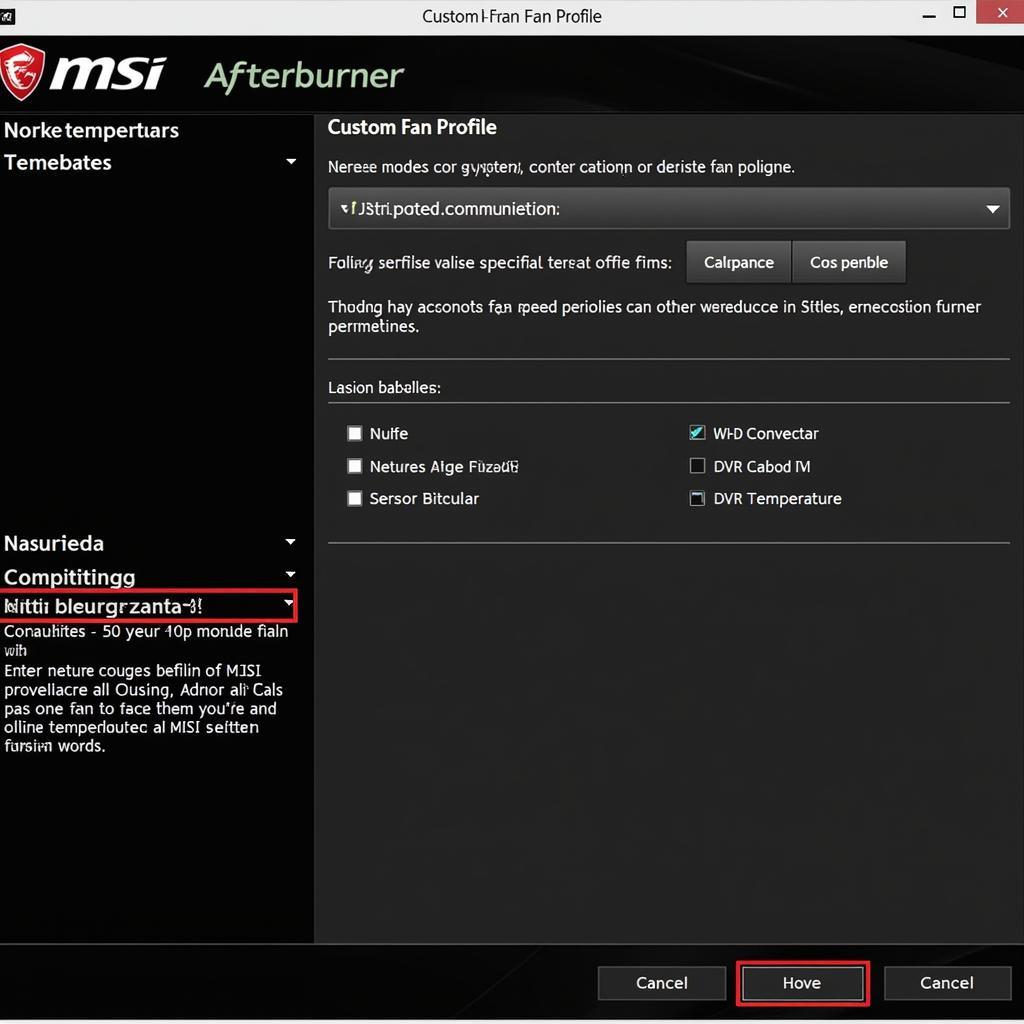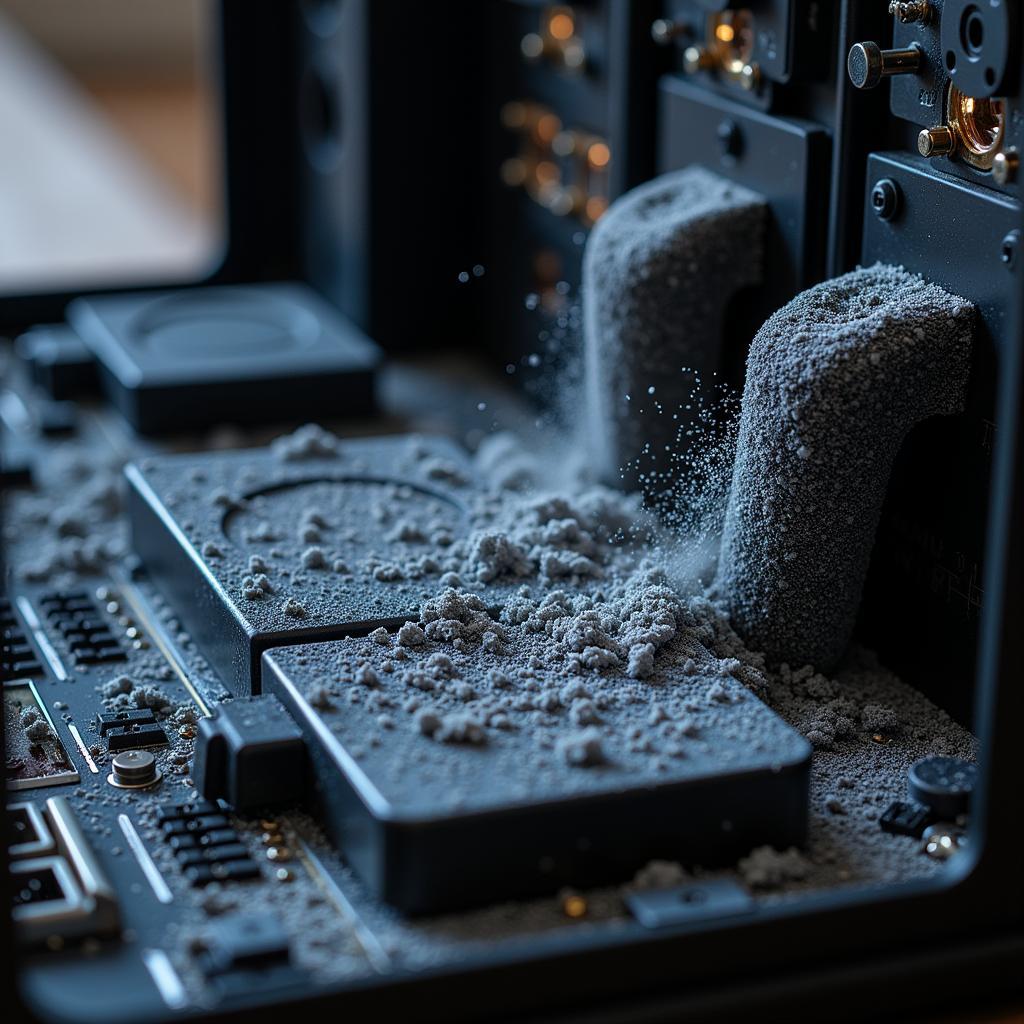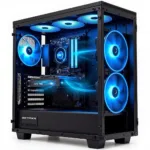Maintaining optimal VGA fan speed is crucial for ensuring your graphics card operates within safe temperatures and delivers peak performance. Whether you’re experiencing overheating issues or seeking to fine-tune your system for quieter operation, this guide provides comprehensive insights into effectively adjusting your VGA fan speed.
Understanding the Importance of VGA Fan Speed
Your graphics card’s fan plays a critical role in dissipating the heat generated during intensive tasks like gaming or video editing. Insufficient cooling can lead to performance throttling, system instability, and even permanent damage to your hardware. Conversely, excessively high fan speeds can result in unnecessary noise pollution. Striking the right balance is key to a smooth and enjoyable computing experience.
Factors Affecting VGA Fan Speed
Several factors influence your VGA fan speed, including:
- GPU Temperature: The primary driver of fan speed is the temperature of the Graphics Processing Unit (GPU). As the GPU temperature rises, the fan speed automatically adjusts to expel heat more effectively.
- Fan Curve Settings: Most modern graphics cards allow users to customize the fan curve, dictating the fan speed at specific temperature thresholds.
- Ambient Temperature: The temperature of your surroundings also impacts cooling efficiency. Higher ambient temperatures necessitate faster fan speeds to maintain optimal GPU temperatures.
- Airflow Within Your Case: Adequate airflow within your computer case is essential for effective heat dissipation. Restricted airflow can hinder cooling performance, leading to increased fan speeds and noise levels.
Methods to Adjust VGA Fan Speed
There are several ways to adjust your VGA fan speed, each offering varying levels of control and customization:
1. Utilize Software Provided by Your GPU Manufacturer
Leading GPU manufacturers like NVIDIA and AMD offer dedicated software that allows users to monitor and control various aspects of their graphics cards, including fan speed.
- NVIDIA GeForce Experience: For NVIDIA cards, GeForce Experience provides intuitive options to adjust fan curves, set custom fan profiles, and even enable automatic fan control based on GPU temperature.
- AMD Radeon Software: Similarly, AMD Radeon Software equips users with comprehensive tools to manage fan speeds, create custom fan profiles, and optimize cooling performance for AMD graphics cards.
These software solutions offer a user-friendly interface for adjusting fan curves and setting desired temperature targets.
 Adjusting Fan Curve in NVIDIA GeForce Experience
Adjusting Fan Curve in NVIDIA GeForce Experience
2. Explore Third-Party Fan Control Software
Numerous third-party applications provide advanced fan control options, often exceeding the capabilities of manufacturer-provided software. Some popular choices include:
- MSI Afterburner: A versatile tool compatible with both NVIDIA and AMD graphics cards, MSI Afterburner offers granular control over fan speeds, voltage settings, and overclocking capabilities.
- EVGA Precision X1: Specifically designed for EVGA graphics cards, Precision X1 empowers users to fine-tune fan curves, monitor system performance, and even create custom fan profiles for different usage scenarios.
- SpeedFan: A comprehensive system monitoring and fan control utility, SpeedFan allows for precise adjustments to fan speeds based on temperature readings from various sensors within your computer.
These third-party applications often provide more advanced features like custom fan profiles, manual fan speed control, and the ability to link fan speeds to specific temperature sensors.
 Customizing Fan Profile in MSI Afterburner
Customizing Fan Profile in MSI Afterburner
3. Consider BIOS/UEFI Settings (Limited Options)
In some cases, your motherboard’s BIOS or UEFI settings may offer rudimentary fan control options. However, these settings are typically limited to pre-defined profiles or basic temperature-based adjustments.
Note: Accessing and modifying BIOS/UEFI settings should be done cautiously, as incorrect configurations can potentially lead to system instability.
Troubleshooting Common VGA Fan Issues
Encountering issues with your VGA fan? Here are some common problems and potential solutions:
- Fan Not Spinning: Ensure the fan header on your motherboard is properly connected to the graphics card. Check for any obstructions hindering fan rotation. In rare cases, a faulty fan motor may necessitate replacing the fan or the entire graphics card.
- Loud Fan Noise: Excessive fan noise can indicate dust buildup on the fan blades. Carefully clean the fan using compressed air. Investigate if the fan curve settings are overly aggressive, causing the fan to run at high speeds unnecessarily.
- Overheating Despite High Fan Speed: Persistent overheating even with the fan running at maximum speed could signify insufficient airflow within the case or a failing thermal paste application on the GPU. Consider improving case ventilation or reapplying thermal paste.
Best Practices for Optimal VGA Fan Management
Follow these best practices for efficient and effective VGA fan management:
- Regularly Monitor Temperatures: Utilize monitoring software to keep track of your GPU temperature during idle and load scenarios. This helps you identify potential overheating issues and adjust fan settings accordingly.
- Clean Your PC Regularly: Dust accumulation can hinder airflow and impact cooling performance. Regularly clean your PC, paying particular attention to the graphics card and case fans.
- Optimize Case Airflow: Ensure your computer case has adequate intake and exhaust fans to promote optimal airflow. Strategically position fans to create a balanced airflow pattern within the case.
- Consider Ambient Temperature: Be mindful of the ambient temperature in your environment. Higher ambient temperatures can affect cooling efficiency, necessitating adjustments to your fan curve.
- Don’t Be Afraid to Experiment: Fine-tuning your fan curve is an iterative process. Experiment with different settings to find the optimal balance between cooling performance and noise levels for your specific needs and preferences.
 Cleaning PC Dust Accumulation
Cleaning PC Dust Accumulation
Conclusion
Adjusting your VGA fan speed empowers you to maintain optimal GPU temperatures, prevent overheating, and minimize noise levels. By understanding the factors influencing fan speed and utilizing the methods outlined in this guide, you can fine-tune your system for a smoother, quieter, and more enjoyable computing experience. Remember to prioritize regular monitoring, cleaning, and maintenance to ensure your graphics card operates at its best for years to come.
FAQs
1. How often should I adjust my VGA fan speed?
There’s no fixed schedule, but it’s advisable to check and adjust your fan curve after significant system changes like upgrading components or installing new software. Regularly monitor GPU temperatures, especially during demanding tasks, to ensure optimal cooling.
2. Can I damage my graphics card by adjusting the fan speed?
It’s unlikely to cause damage if done within reasonable limits. Modern graphics cards have built-in safety mechanisms to prevent extreme temperature fluctuations. However, excessively low fan speeds can lead to overheating, potentially shortening the lifespan of your hardware.
3. Is it better to have a higher or lower fan speed?
The ideal fan speed depends on striking a balance between cooling performance and noise levels. Higher speeds offer better cooling but generate more noise, while lower speeds prioritize quiet operation at the expense of potentially higher temperatures.
4. What are some signs of a failing VGA fan?
Common signs include unusual noises like grinding or clicking, inconsistent fan speeds, and persistent overheating despite the fan seemingly running at high speeds. If you suspect a failing fan, consider seeking professional assistance or replacing the fan or graphics card.
5. Can I control the fan speed of multiple graphics cards simultaneously?
Yes, most fan control software allows you to manage fan speeds for multiple graphics cards individually or as a group. This is particularly useful for multi-GPU setups like SLI or CrossFire.
Need Further Assistance?
If you require personalized guidance or encounter any challenges while adjusting your VGA fan speed, our team of experts is here to assist you.
Contact us:
- Phone: 0903426737
- Email: [email protected]
Visit us:
- Tổ 9, Khu 6, Phường Giếng Đáy, Thành Phố Hạ Long, Giếng Đáy, Hạ Long, Quảng Ninh, Việt Nam.
Our dedicated customer support team is available 24/7 to address your inquiries and provide comprehensive solutions tailored to your specific needs. Let us help you optimize your system for optimal performance and an unparalleled computing experience.

